Sikyatki Revival
Sikyátki Revival and The Evolution of Hano Polychrome
The name "Nampeyo" has been associated with much of the pottery produced on the Hopi Reservation in northeastern Arizona since the late 1800s. The first potter in the line, Nampeyo of Hano, just happened to be the right person in the right place at the right time. She re-interpreted and re-introduced various proto-historic forms, designs and color schemes, becoming the icon of a new/old approach to the making of pottery that was quickly adopted by other potters. This new style eventually came to be known as "Sikyátki Revival Ware." It was associated with archaeological excavations that were conducted during the 1890s at the ruins of Sikyátki, a Hopi village which had existed between about 1375 and 1625 on the east flank of First Mesa, about three miles north of Hano.
The common story is that Nampeyo's husband Lesou was hired by archaeologist Jesse Walter Fewkes in 1895 to help in the excavation of Sikyátki. As Fewkes told it, Lesou told Nampeyo about the pottery he'd seen at the site and his descriptions sparked her interest. She visited the site and saw first-hand the finely made, impeccably decorated jars and bowls that were being discovered and removed. Supposedly influenced by what she saw, Nampeyo’s work changed to emphasize highly stylized bird forms, especially macaws and eagles.
In reality, Lesou never worked for Fewkes and Nampeyo was well known for producing high quality Sikyátki-Revival Ware before Fewkes ever arrived in the area. No one called it that back then but it was what local traders like Thomas Keam and Lorenzo Hubbell were asking for when potters would bring them pots for sale. The traders wanted shapes, colors and designs like those that littered many of the old ruins in the area.
The mounds at what were Sikyátki, Awatovi and Jeddito yielded many distinctive shapes and designs, long before Fewkes arrived. Nampeyo drew some of her inspiration from other ancestral Hopi pottery types such as Jeddito and Awatovi Black-on-Yellows. Some of the designs she used have been traced west to Tsegi Canyon and Homol'ovi, northwest to Grand Gulch and south to FourMile Ranch (more than 100 miles from where she lived).
Describing Sikyátki-Revival Ware (or "Hano Polychrome," to be more accurate) is difficult. The pots are uniformly polychrome, employing vegetal and mineral paints that fire to become the reds, browns, yellows and blacks that we associate with Hopi pottery these days. The designs employ graceful, curvilinear lines that are well balanced across the three-dimensional surface of the pot. The designs also frequently incorporate religious symbols. The shapes are distinctive: wide shouldered flattened jars, low bowls with decoration inside and seed jars with small openings in their centers and tops that seem to defy the laws of physics as dictated by the clay.
The base clays polish and fire to an unusually smooth texture, with colors ranging from golden yellow to orange to light brown. Since the fired surface came out so smooth, no slip had to be applied to the overall surface prior to applying the designs.
The pueblos of Hopi and Zuni developed a close relationship in the 1880s when many Hopis left the Hopi mesas during a drought and smallpox epidemic and waited at Zuni for conditions to improve so they could return. This connection influenced Hopi potters when they saw the Zunis use a white slip under their decorations. That practice returned to Hopiland when the potters returned and it was used in the production of "Polacca Ware," the most common form of Hopi pottery being made until the late nineteenth century. Polacca Ware is characterized by a white background with a "crackled" surface.
At the encouragement of local traders Thomas Keam and Lorenzo Hubbell, some Hopis started recreating old styles and designs based on the shapes and designs implied by ancient pot shards they found among the ruins left by their ancestors. Nampeyo was among the potters who were making quantities of non-utilitarian pottery for trade purposes and she heard Keam's call.
Like most other potters in the area, she was making Polacca Ware and decorating it with a large vocabulary of ancient designs. Her innovation was to abandon the use of the white slip and apply her decorations directly to the polished clay body, just as she'd observed on the ancient pots. (The Navasie/Naha families still make their pottery using the white slip but their process wasn't perfected until the early 1950s and now it's called "Walpi Polychrome.")
Nampeyo was relatively prolific in her making of pots. She also had an excellent eye for design and a steady hand for painting her designs. She and her descendants have set the quality bar for Sikyátki-Revival (Hano Polychrome) pottery very high and that level of quality continues to rise today.
The tremendous diversity of design and technique in modern Hopi pottery stands as testament to its long history and the care with which today's Hopi and Hopi-Tewa potters seek to preserve their heritage while continuing to innovate and evolve the medium.
Accomplished potters from some of the Rio Grande Pueblos have also created Sikyátki-Revival/Hano Polychrome pieces. Among them is Tonita Roybal of San Ildefonso Pueblo. Les Namingha, a 1/2 Hopi, 1/2 Zuni potter creates Sikyátki and Hawikuh-Revival pottery.
Showing all 12 results
-
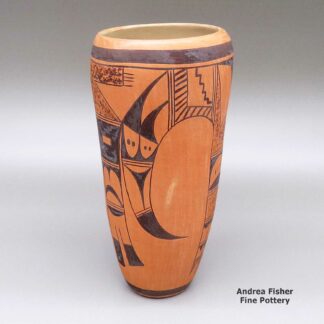
Barbara Polacca, zzho3b536, Cylinder with a bird element design
$425.00 Add to cart -
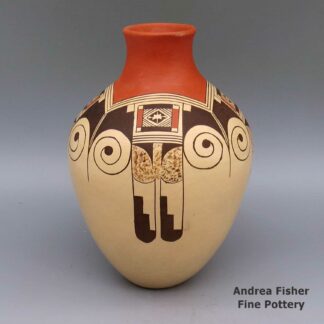
Clinton Polacca, esho2g020, Polychrome jar with geometric design
$650.00 Add to cart -
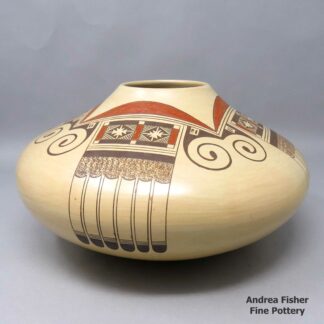
James Nampeyo, rwho0k205: Polychrome jar with 4-panel eagletail and geometric design
$1,600.00 Add to cart -
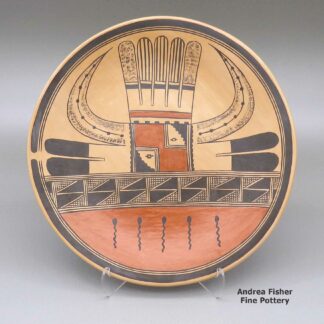
Jean Sahmie, zzho2m506, Polychrome plate with a tadpole and geometric design
$1,100.00 Add to cart -

Loren Ami, zzho3c135, Jar with geometric design
$4,900.00 Add to cart -

Lorna Lomakema, zzho2m520, Polychrome bowl with a bird and geometric design
$1,100.00 Add to cart -

Marcia Rickey aka Flying Ant, zzho3a060, Polychrome bowl with bird element and geometric design
$1,395.00 Add to cart -
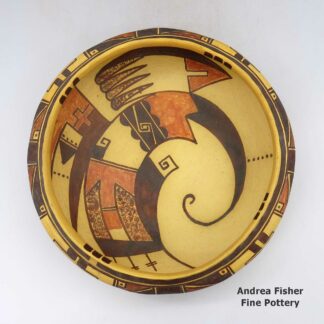
Michael Hawley, esho2g013, Polychrome bowl with geometric design
$1,400.00 Add to cart -

Rachel Sahmie, spho3b082, Jar with fire clouds and a geometric design
$2,600.00 Add to cart -
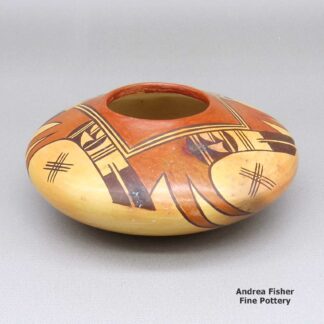
Rachel Sahmie, spho3b091, Bowl with fire clouds and geometric design
$375.00 Add to cart -

Rachel Sahmie, zzho2m538, Small polychrome jar with fire clouds and a two panel geometric design
$350.00 Add to cart -
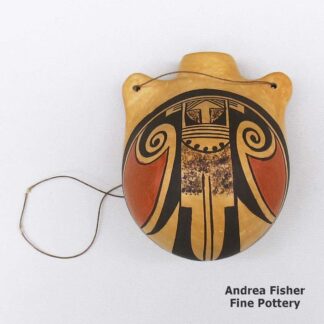
Unknown Hopi Artist, zzho3b534, Canteen with a geometric design and string handle
$195.00 Add to cart
Showing all 12 results